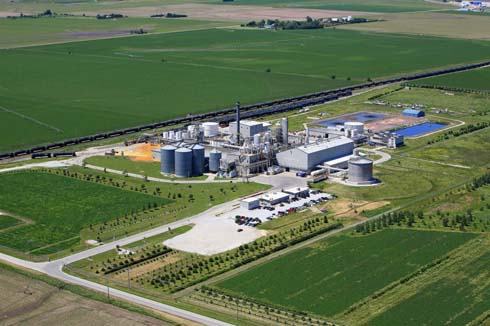 Abengoa
Abengoa
Annual Report 2010
- Corporate Social Responsibility Report
- Committed to Innovation
- Sustainability, Abengoa’s Business Metric with a Postive Impact on Society
Abengoa’s efforts in the field of innovation and technological development are intended to serve sustainability in its three essential dimensions: Social, environmental, and economic.
Innovation is not an end in itself, but rather embraces the mission of gearing society towards a better world. It seeks to better our present socioeconomic system, which is neither sustainable nor serves everyone, and progress towards a model that will allow future generations to enjoy the same resources that are available to us today. Innovation, therefore, constitutes a commitment to the future.
Abengoa enjoys a position of international leadership in a significant number of key areas in the so-called “green economy”. Here, through its entire range of business units, Abengoa has embraced a firm commitment, by means of its innovation policy and strategy, to pursue sustainable use of resources and raw material spanning the entire lifecycle.
Abengoa concentrates its efforts on technological innovation in the field of renewable energy production. Promotion and implementation of these technologies are based on sources featuring low environmental impact and higher energy efficiency. This technological development equates to a reduction in greenhouse gas emissions, as well as decentralization with respect to conventional energy sources, releasing and freeing nations from their dependency on energy and the geopolitical subordination imposed on them by those in possession of the energy sources, which are linked to today’s causes of supply insecurity and scarcity.
The following are the key areas of sustainable development in which Abengoa exerts its leadership:
Energy
In the renewable energy area, the company is conducting work in two major fields of production: Solar power and biofuels.
Abengoa is engaged in electrical power generation aimed at replacing conventional fuels with solar thermal and photovoltaic solar solutions, as well as developing technologies to enable energy storage.
In the concentrating solar power (CSP) segment, it should be noted that Abengoa owns the two largest existing commercial power towers in the world, and is developing several parabolic trough plants, including the world’s largest currently under construction, located in the US state of Arizona. Abengoa is indisputably the leading global player in this field, a position gained also through significant cooperation with the solar platform in Almería, as well as the more general involvement of the Spanish Center for Energy, Environmental and Technological Research (CIEMAT)..
Energy efficiency The company also produces first- and second-generation biofuels to substitute traditional fossil fuels. In relation to the use of biomass as an energy source, Abengoa has been conducting numerous R&D and demonstration projects, which can now be taken one step further and converted into commercial projects at enzymatic hydrolysis plants, biomass gasification facilities, and hybrid biomass and CSP plants.
Furthermore, Abengoa is heavily involved in the development of new hydrogen generation systems capable of harnessing renewable sources, and of second-generation fuel cells. The company is also introducing improvements to, developing smart grids with a view to optimizing energy consumption and grid manageability, and honing CO2 capture and storage programs.

Abengoa’s R&D investment totaled €92.6 M in 2010, up 3.2 % year-on-year and representing approximately 1.7 % of the company’s revenue and an upward trend of 7.8 % in annual growth of this investment